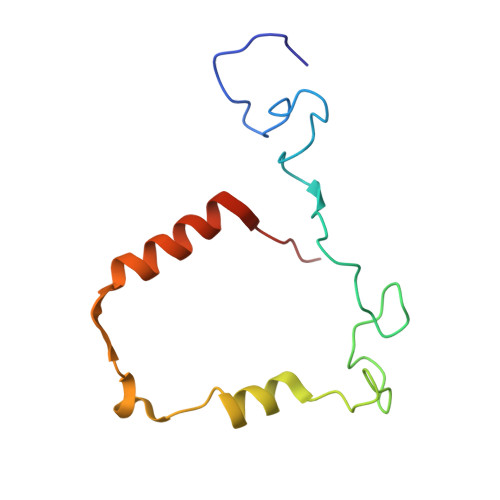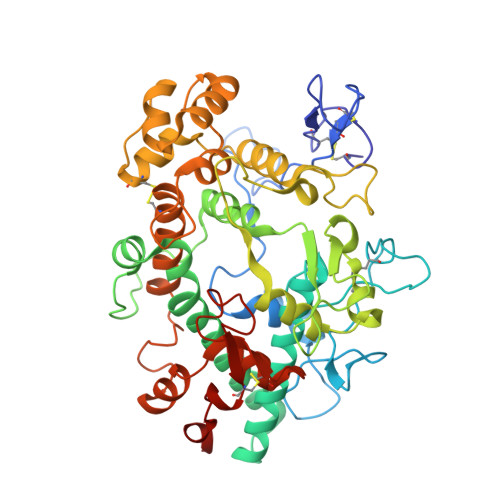Small molecule and macrocyclic pyrazole derived inhibitors of myeloperoxidase (MPO).
Hu, C.H., Neissel Valente, M.W., Halpern, O.S., Jusuf, S., Khan, J.A., Locke, G.A., Duke, G.J., Liu, X., Duclos, F.J., Wexler, R.R., Kick, E.K., Smallheer, J.M.(2021) Bioorg Med Chem Lett 42: 128010-128010
- PubMed: 33811992
- DOI: https://doi.org/10.1016/j.bmcl.2021.128010
- Primary Citation of Related Structures:
7LAE, 7LAG, 7LAL, 7LAN - PubMed Abstract:
Myeloperoxidase (MPO), a critical enzyme in antimicrobial host-defense, has been implicated in chronic inflammatory diseases such as coronary artery disease. The design and evaluation of MPO inhibitors for the treatment of cardiovascular disease are reported herein. Starting with the MPO and triazolopyridine 3 crystal structure, novel inhibitors were designed incorporating a substituted pyrazole, which allowed for substituents to interact with hydrophobic and hydrophilic patches in the active site. SAR exploration of the substituted pyrazoles led to piperidine 17, which inhibited HOCl production from activated neutrophils with an IC 50 value of 2.4 μM and had selectivity against thyroid peroxidase (TPO). Optimization of alkylation chemistry on the pyrazole nitrogen facilitated the preparation of many analogs, including macrocycles designed to bridge two hydrophobic regions of the active site. Multiple macrocyclization strategies were pursued to prepare analogs that optimally bound to the active site, leading to potent macrocyclic MPO inhibitors with TPO selectivity, such as compound 30.
Organizational Affiliation:
Research and Development, Bristol-Myers Squibb Company, P. O. Box 5400, Princeton, NJ 08543, United States. Electronic address: carol.hu@bms.com.






















